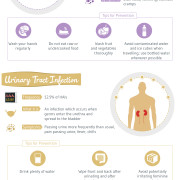Infographic: Understanding and Preventing Hospital Acquired Infections

The following guest post and Hospital Acquired Infection Infographic was submitted by David Smith from UK based Cleaning Services Group.
Hospitals and healthcare facilities are intended to improve our health and, for the most part, they fulfil that function. However, some of these can pose unwanted health risks to patients in the form of hospital acquired infections (HAIs), namely those diseases such as pneumonia which can be contracted in healthcare settings if medical professionals fail to take the necessary care with patients.
The below infographic from Cleaning Services Group identifies the most common HAIs, outlining what they are, how they can be contracted and, crucially, what can be done to prevent these infections. Pneumonia and surgical site infections account for more than 43% of HAIs between them, a staggering figure which may shock and worry you.
The risks of contracting a HAI can vary depending on the physical condition of the patient and the nature of the healthcare facility. An elderly patient undergoing a long-term stay in a hospital with substandard hand hygiene practices is at far greater risk than a robust young adult staying at a hospital where safety standards are consistently met. Learn more about HAIs and what you can do to minimize the risk of you or a loved one becoming infected.


